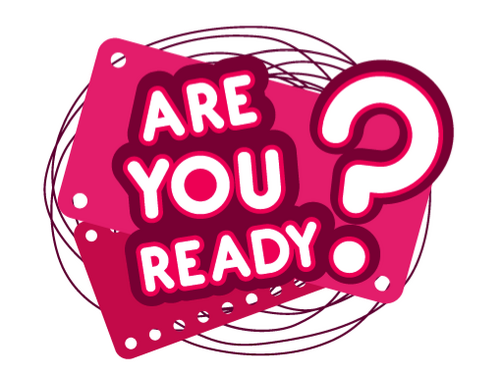How To Write Good Story Leads
___The way journalists report the news may be changing, but having a strong story opening remains as important as ever.
Have a look at the following video and start thinking about the topic:
Remember: A lead sets the tone and mood for the rest of your story, so choose carefully. Depending on what you're writing about, certain leads may be more appropriate than others.
http://global.oup.com/us/companion.websites/9780199846412/student/chapter8/exercise/exercise2/
Activities
Follow the instructions for each of
the sections below.
Condensing Lengthy Leads
Activity 1
Condense each of these leads to no more than two
typed lines, or about 20 words.
1. Roger
Datolli, 67, of 845 Conway Road, a retired attorney and husband of Mayor
Sabrina Datolli, who is serving her fourth term as mayor, was injured in a
three-vehicle accident Thursday afternoon around 3:20 p.m. at the intersection
of Warren and Davidson avenues, suffering a broken leg and several broken ribs
when the car he was driving was struck broadside by a pickup truck driven by
Jerry R. Harris, 31, of 2245 Broadway Ave., and then was pushed into the path
of another vehicle.
2. The city
Planning and Zoning Commission met Thursday for its regularly scheduled
meeting and voted 3-2 to approve a joint plan by the citys Council of
Government and the local Chamber of Commerce to renovate the core downtown
business district by building a convention center and sports arena complex that
will serve as a site for business meetings and conferences as well as possibly
host a minor league hockey team on the Olympic-size ice rink planned for the
site.
Activity 2
Using the Proper Sentence Structure
subject, verb, direct object.
Avoid starting the leads with a long
clause or phrase. You may want to divide some of the leads into several
sentences or paragraphs. Correct all errors.
1. Wondering
whether or not it was legally possible and if they could muster enough votes to
support their desire to see changes implemented in the downtown historic
section of the city, city council members Sandra Gandolf and Alice Cycler at
the regular monthly city council meeting raised the issue of having the city's
planning and zoning commission look into the possibility of creating a local
board to oversee changes to buildings within the six-block downtown historic
district.
2.
Because the victim contributed in large measure to
his own death by refusing medical attention that might have saved his life
after the incident, James K. Arico, the 47-year-old man accused of stabbing him
in the chest during an argument seven months ago, was allowed to plead guilty
to assault today and was sentenced to six months in the county jail. He had been charged with murder.
Activity 3
Emphasizing the News
1. At a news
conference held at the Department of Energy in Washington, D.C., Monday
afternoon the head of the agency told reporters that the Senate's approval of a
plan to dump nuclear waste material in the Nevada desert near Las Vegas
will provide a safe haven for more than 77,000 tons of radioactive waste.
2. Tracy
Tibitts, Lisa Drolshagen and Dorothy Brayton, all members of the Delta Delta
Delta sorority at Iowa State University, appeared in a local courtroom this
morning and testified that the defendant, Steven House, appeared drunk when he
got into his car to leave the party moments before he struck and killed the
pedestrian.
1 Attribution is stating who made the
quote or gave the information
Practice
Maybe you need some extra practice choosing the right words as a first step.
So, go to: https://learnenglishteens.britishcouncil.org/exams/grammar-and-vocabulary-exams/choose-correct-word
Or recognizing words that do not belong?
For practice go to: https://learnenglishteens.britishcouncil.org/exams/grammar-and-vocabulary-exams/odd-one-out
Or, is building words your issue?
For practice go to: https://learnenglishteens.britishcouncil.org/exams/grammar-and-vocabulary-exams/word-building
Prepositions are also important when writing, and a different preposition or a wrong one can be a disaster when writing leads.
For practice go to:https://learnenglishteens.britishcouncil.org/exams/grammar-and-vocabulary-exams/words-go-together
Ok, now go to a lead exercise and check whether you are prepared for them.
Prof. Maller
Maybe you need some extra practice choosing the right words as a first step.
So, go to: https://learnenglishteens.britishcouncil.org/exams/grammar-and-vocabulary-exams/choose-correct-word
Or recognizing words that do not belong?
For practice go to: https://learnenglishteens.britishcouncil.org/exams/grammar-and-vocabulary-exams/odd-one-out
Or, is building words your issue?
For practice go to: https://learnenglishteens.britishcouncil.org/exams/grammar-and-vocabulary-exams/word-building
Prepositions are also important when writing, and a different preposition or a wrong one can be a disaster when writing leads.
For practice go to:https://learnenglishteens.britishcouncil.org/exams/grammar-and-vocabulary-exams/words-go-together
Ok, now go to a lead exercise and check whether you are prepared for them.
Go to the link below and to really understand the exercise click the CHECK 1 button, that way you will have a clearer picture of what to do.
Go to: http://www.grammar-quizzes.com/intros.html
Good luck!
This is the end of our Lab work.
See you around and have a fantastic end of the term.
Prof. Maller





